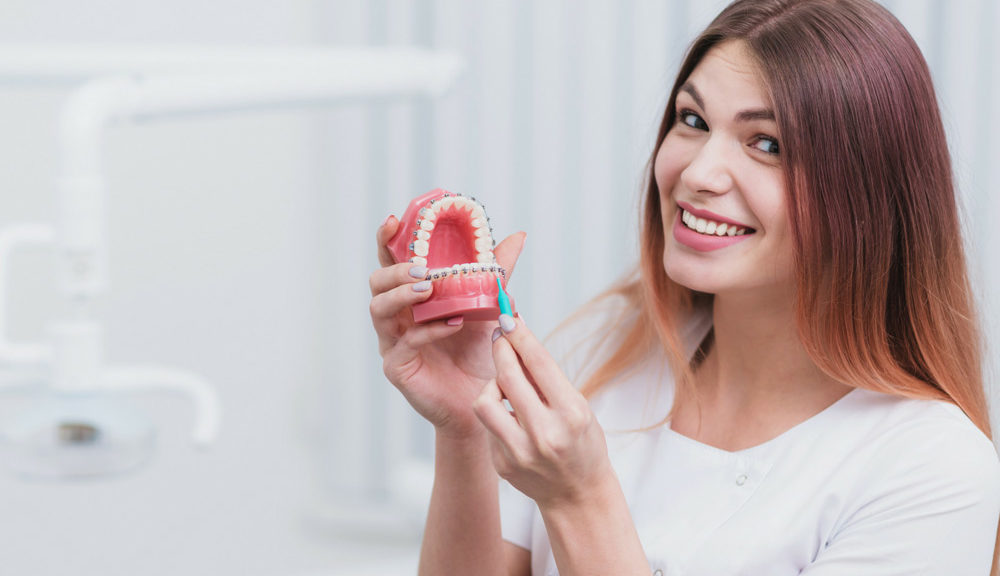
Flossing is a topic that often divides people. It’s one of those little things that everyone knows they should be doing, but just never seem to get around to doing. It’s like updating your resume or doing those hardcore abs workouts. While even the title of this blog may have put you off, it’s important to learn a few things about flossing, especially if you are a wearer of braces or retainers. It’s not such a daunting concept, we promise!
Why
There have been many arguments recently about how flossing may not be the necessary dental technique it is regaled as. But don’t think that lack of evidence means it’s harmful or not helpful in any way – it likely just means the evidence has not been 100% proven yet. Most dentists and orthodontists recommend flossing because it reduces the risk of gum disease and helps remove plaque. Flossing regularly, and properly, gets plaque from those hard-to-reach areas that brushing just can’t access. If that plaque builds up it can harden and form tartar, which can lead to gum disease. So, it’s pretty important after all.
How often
In an ideal world, everyone would be flossing every day. But if you miss a day or two, don’t stress too much. It doesn’t matter what time of day you reach for the floss, before or after brushing is fine, but aim for at least four times a week, and particularly after a meal with ingredients like spinach that might hang around for a while in your teeth.
Tips
Technique is important when it comes to flossing. You won’t keep that perfect smile and healthy teeth just by flossing half-heartedly for a minute or so. You should:
Flossing with braces
Admittedly, flossing with braces can be a more time-consuming process. It’s a good idea to use a mirror, and choose a time when you know you won’t be rushed or likely to do a half-hearted job. Keep the above tips in mindbut as well as flossing between your teeth, you’ll also need to thread the floss beneath the wire. Once you’ve got the floss under the wire, you can then thread it between the teeth. Instead of bringing the floss back up to the top of the tooth, you’ll need to pull the floss out at the bottom, nearer the gum, to avoid catching the wire or possibly breaking a bracket.
Flossing alternatives
If you aren’t a fan of the usual manual technique, there are alternatives available. If you also happen to have a fixed retainer, you’ll need to use these as a normal thread of floss just won’t cut it.
Waterpik – this device shoots pressurised water in between your teeth, working away plaque in the same manner a piece of floss would. Handy for getting in between those braces or retainers.
Small brushes – these small, bendy brushes on a stick are flexible enough to get between wires and teeth and the bristles of the brush can get between teeth as well.
Superfloss – this one is normal floss with plastic-tipped ends that you are able to thread between your braces more easily than you can with normal thread, taking most of the hassle out of flossing with braces and keeping your straight teeth and perfect smile in order.
(03) 9466 8484
Level 1, Suite 5, 93-97 Plenty Road, Bundoora VIC 3083
(03) 9466 8484
58 Mernda Village Drive, Mernda, VIC 3754
(03) 9307 9370
92 Inglewood Drive, Burnside Heights, VIC 3023